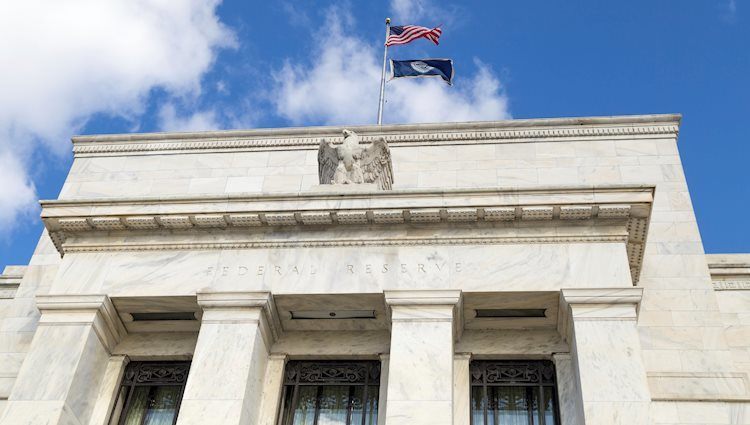
- Commentary from Fed officials on interest rates and inflation outlook will be closely scrutinized this week.
- Fedspeak could help reverberate the market expectations for a September rates on-hold decision.
- Fed rate outlook could significantly impact the value of the US Dollar across its major rivals.
Federal Reserve (Fed) policymakers are set to make their scheduled appearances on Tuesday, as full markets return, anticipating the release of the high-impact US PCE inflation due later this week.
Meanwhile, the US Dollar remains under moderate selling pressure so far this week, extending Friday’s downside, fuelled by an unexpected easing in UoM 5-year Consumer Inflation Expectations for May. The reading came in at 3.0% , down from April’s 3.1% and below the market consensus of 3.1%. Markets are pricing in a 50% probability that the Fed will hold interest rates in September, according to the CME Group’s FedWatch Tool.
In the past week, Fed policymakers leaned in favor of a cautious stance on the inflation outlook, raising concerns amongst the market participants on potential Fed rate cuts this year. Therefore, the upcoming speeches by Fed Governor Michelle Bowman and Cleveland Fed President Loretta Mester in the Asian session will be closely scrutinized by markets for gauging the path forward on interest rates.
Both these officials are due to participate in a panel discussion titled “Policy Panel Discussion” at the Bank of Japan – Institute for Monetary and Economic Studies, in Tokyo. The event is scheduled at 04:55 GMT.
Later in the American session, Fed Governor Lisa Cook and San Francisco Fed President Mary Daly will take up the rostrum to share their thoughts at a panel discussion titled “AI and the Economy” at an event hosted by the Federal Reserve Bank of San Francisco.
Fed FAQs
Monetary policy in the US is shaped by the Federal Reserve (Fed). The Fed has two mandates: to achieve price stability and foster full employment. Its primary tool to achieve these goals is by adjusting interest rates. When prices are rising too quickly and inflation is above the Fed’s 2% target, it raises interest rates, increasing borrowing costs throughout the economy. This results in a stronger US Dollar (USD) as it makes the US a more attractive place for international investors to park their money. When inflation falls below 2% or the Unemployment Rate is too high, the Fed may lower interest rates to encourage borrowing, which weighs on the Greenback.
The Federal Reserve (Fed) holds eight policy meetings a year, where the Federal Open Market Committee (FOMC) assesses economic conditions and makes monetary policy decisions. The FOMC is attended by twelve Fed officials – the seven members of the Board of Governors, the president of the Federal Reserve Bank of New York, and four of the remaining eleven regional Reserve Bank presidents, who serve one-year terms on a rotating basis.
In extreme situations, the Federal Reserve may resort to a policy named Quantitative Easing (QE). QE is the process by which the Fed substantially increases the flow of credit in a stuck financial system. It is a non-standard policy measure used during crises or when inflation is extremely low. It was the Fed’s weapon of choice during the Great Financial Crisis in 2008. It involves the Fed printing more Dollars and using them to buy high grade bonds from financial institutions. QE usually weakens the US Dollar.
Quantitative tightening (QT) is the reverse process of QE, whereby the Federal Reserve stops buying bonds from financial institutions and does not reinvest the principal from the bonds it holds maturing, to purchase new bonds. It is usually positive for the value of the US Dollar.